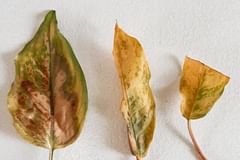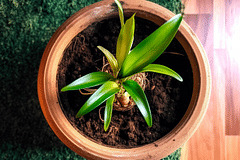How do you revive overwatered succulents?
Discover practical tips to rescue overwatered succulents in this easy-to-follow guide. Revive your succulent with clear, simple advice on stopping water, repotting in dry soil, and propagating healthy leaves. Perfect for plant owners of all levels!
Overwatering is a common issue for succulents. These tough plants love dry conditions, but sometimes we give them more water than they need. In this short plant care guide, I'll give you 3 simple tips that will help you bring your succulent back to health.
We'll look at these topics:
Let's get started and help to take great care of our succulents!
3 simple tips for reviving overwatered succulents
Succulents love a dry environment and can survive without water for weeks. So when you water your succulent too much, it'll get overwhelmed and will start to show signs of rotting. An overwatered succulent will become mushy and its leaves will also start to droop.
Unfortunately, sings of too much water can look a little like the signs of not enough water, so if you're not sure whether your succulent has gotten too much or too little water, have a look at the signs for over- and underwatered succulents.
Once you're sure you've given your plant too much water, you can go through the following 3 tips to revive your succulent.
Stop watering your succulent
When you see your succulent struggling in wet soil, it's very tempting to give them more water, because plants need water to live. Don't fall for it! Your succulent thrives in dry soil, so if the soil is wet, make sure to get it dry as quickly as possible.
If you've only overwatered your succulent once or twice, you can follow these steps to make it happy again:
- Stop watering your succulent
- Place it in a very warm and sunny spot by a window
- Use a pot with a drainage hole and well-draining soil
By moving the plant to a warm and sunny spot, you help the soil to dry up very quickly. The drainage hole and well-draining soil help you to get rid of excess water in the pot quickly, so your succulent is never standing in wet soil.
If you've consistently overwatered your succulent, its roots might start to get root rot and you'll need to take extra steps to save your plant.
Repotting in dry soil
When the soil of your succulent is too wet for too long, it can harm the plant's roots. If the soil is currently wet, you'll need to take action quickly, because if you leave the plant in the soil any longer, it's going to cause more problems. Step 1: Repot your succulent in new, dry soil. Let's see how:
- Gently take the plant out of its pot.
- Remove wet soil from the roots, being careful not to damage them.
- Allow the roots to dry for a day.
- Then, put the plant into new, dry soil that drains well.
If the succulent is becoming mushy, even after you've repotted it in dry soil, your plant is suffering from root rot and you'll need to propagate your plant to save individual leaves of the plant.
Propagate the succulent

Luckily, succulents are easy to propagate, so even if the stem has started to become mushy, you can still save parts of your plant. If the step has become mushy, the parent plant will unfortunately die. Some people might still be able to save the plant, but I've never personally had success with it.
The best chance of success is to propagate your succulent leaves. Succulents are very easy to propagate and you'll have a new plant within a few months.
If you leave the leaves on the parent plant, sooner or later they'll start to rot as well, so your best bet is to give them a fresh start. Here's how you do this:
- Remove healthy leaves from the parent plant by carefully twisting them off
- Let the leaves dry in a sunny spot for 1-2 days
- After 1-2 days place the leaves on well-draining, dry soil
- Water the leaves and soil and place the pot in a sunny spot
- Now wait for a few weeks and roots will start to grow from the leaves into the soil
You'll now have small baby succulents that'll need some time to start growing stems and leaves of their own.
Conclusion
Taking care of succulents is a learning process. If overwatering happens, don't worry. With these tips, your plant can thrive again. Remember to observe and learn as you grow your gardening skills. I hope you found these tips on Reviving Overwatered Succulents, Succulent Care Tips, and Succulent Recovery helpful. Caring for plants can be easy and enjoyable with the right guidance.
Thank you for reading this post! I hope it helps you to keep your plants healthy and beautiful! If you're looking for more guides on specific plants, you can always request a plant guide to get a guide for the plant you have trouble with.
Test your plant care knowledge
Quiz completed!
Want to learn more? Sign up for my newsletter to receive free tips in your inbox!
Sign up now!













